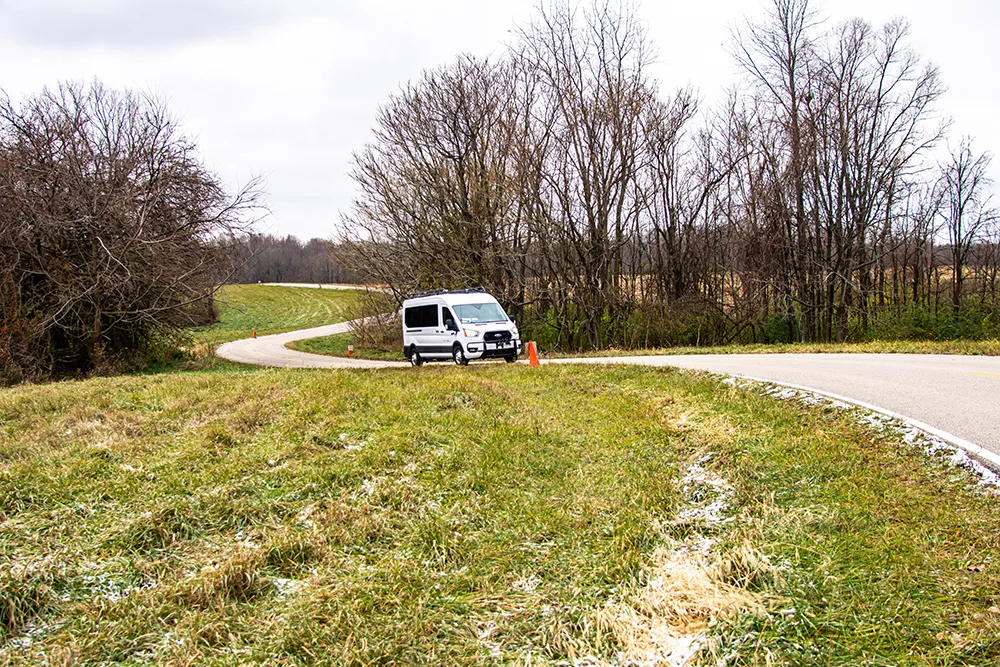
Urban canyons – quite apart from mixed traffic - present a variety of challenges to getting autonomous vehicles onto the roads in cities. But what about the problems that AVs might face in rural areas? Curves, hills, movement in and out of tree-shaded areas – all these are a potential challenge to driverless systems. Yet get it right, and automated vehicle technology has the very real potential of enhancing mobility for people in rural communities that have been historically underserved.
Transport experts in Ohio are about to find out how much of a challenge all this actually is. DriveOhio’s Rural Automated Driving Systems project, funded in part by a $7.5m grant from the US Department of Transportation, is starting two deployments on the state’s country roads. The project focuses on 32 counties in Ohio’s rural Appalachian region, and is “the most comprehensive testing effort yet to be conducted on rural roads in the US”, says DriveOhio, part of Ohio DoT.
The first year-long deployment includes three passenger vehicles - with safety drivers - equipped with AutonomouStuff technology travelling on divided highways and rural two-lane roads in Athens and Vinton counties.
They will be tested in different operational and environmental conditions, including in periods of limited visibility and in workzones. When the automated driving system is engaged, the technology will control steering, acceleration and braking – but DriveOhio says a professional driver will always be in the driver’s seat with their hands on the wheel, ready to take over if required.
Different conditions
The vehicles themselves have already been tested at the Transportation Research Center’s (TRC) 4,500-acre proving grounds in East Liberty, Ohio, on closed roadways.
“The rural Appalachian area surrounding Ohio University would greatly benefit from using autonomous vehicles to deliver goods and transport people, but the road conditions are very different than urban and suburban regions,” said Dr. Jay Wilhelm, associate professor of mechanical engineering at the university.
“Our goal is to bridge the technology gap in rural Appalachian communities so automated vehicles can improve quality of life throughout the region.”
Specific routes are mapped in high-definition so the advanced driving system has precise information about what DriveOhio calls “explicit roadway characteristics such as lane widths and the location of signals, crosswalks, and nearby buildings”.
“Automated driving systems are expected to transform roadway safety in the future, and the data collected with this project will be used to refine the technology to maximise its potential,” said DriveOhio executive director Preeti Choudhary.
“Many vehicles on the road today already have some degree of automated driving system technologies like adaptive cruise control, lane keep assist, or emergency braking. Those systems are meant to enhance safety, but they certainly don’t replace the human driver.”
Hands on the wheel
The second deployment will feature a pair of 53-foot platoon-equipped tractor-trailers connected by technology that enables them to travel closely together at highway speeds. Better fuel consumption for fleets and the reduction of human error are the goals. When the trucks are connected, the lead vehicle controls the speed, and Drive Ohio says the following vehicle will have “precisely matched braking and acceleration to respond to the lead vehicle’s movement”.
Equipped with radar to detect other vehicles, the trucks should be able to monitor and react to slower-moving traffic – although, again, a professional driver will always be in the driver’s seat ready to take over.
The vehicles will first be deployed on the 35-mile US 33 Smart Mobility Corridor, specifically designed for testing smart and connected vehicles, and a private fleet will begin using the trucks in its day-to-day business later in 2023.
“This project holds great promise for the future of transportation and the economic wellbeing of rural communities,” said Brett Roubinek, president and CEO of TRC.








